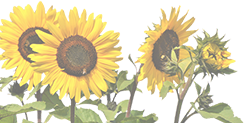
Soils and Growing Mediums Demystified
By Kaw Valley Greenhouses, Inc.

When you’re shopping for potting soil, you might be a bit confused by the different varieties and the names listed on the bags. Vermiculite? Perlite? Sphagnum? There are so many different growing mediums, and many don’t contain any actual soil!
High-quality potting mediums are crucial for keeping your plants properly nourished, and disease and fungus-free, so it’s important to know what you’re buying. Here’s an overview of the fundamentals of growing mediums—find the best formula for your plants.
What is the Best Growing Mediums for Plants?
Growing mediums aren’t a one-size-fits-all kind of thing. There is no single growing medium that’s perfectly suited to every plant. The all-purpose potting mixes work pretty well for most potted houseplants, vegetables and flowers, but it isn’t the kind you’d want to use in your garden bed. There are also certain species of plants, such as succulents and cacti, which prefer soils with a much drier, coarser texture.
Different Types of Growing Mediums
Since different plants tend to prefer different growing mediums, we’re going to break down the basics of all the most popular growing mediums and how you can use them.
Potting Mix
Technically speaking, most potting mixes don’t contain actual “soil” from the earth. It’s usually a mix of organic material like sphagnum moss or ground pine bark mixed with sand, vermiculite, perlite, silt, and clay, fortified with nutrients to keep your plants healthy. Here are some examples of different potting mix blend:
All-Purpose Potting Mix: Typically a blend of two-parts organic material, one-part compost and one-part perlite, sand, or vermiculite.
Succulent and Cacti Mix: Approximately one-part organic matter—typically coco coir or sphagnum moss—and two-parts mineral material, like sand, perlite, or rinsed gravel.
Orchid Mix: These growing mediums are mostly made from loose, chunky material like shredded bark.
 Seed Starting Mix: A much finer, lighter growing medium that often doesn’t have as high of a nutrient content as regular potting mix. It’s more sterile, to prevent diseases from damaging your seedlings when they’re small and vulnerable.
Seed Starting Mix: A much finer, lighter growing medium that often doesn’t have as high of a nutrient content as regular potting mix. It’s more sterile, to prevent diseases from damaging your seedlings when they’re small and vulnerable.
So, what are all those strange ingredients within the growing mediums? Let’s go through those one by one so you know the differences.
Sphagnum Peat Moss: This spongy, textured moss grows on top of bogs. It’s very lightweight, but it holds onto moisture quite well. Mixing it into soil can improve the soil texture and prevent compaction, while also improving moisture retention. On its own, it’s great for moisture-loving houseplants and is helpful in propagation while root systems are small and developing.
Perlite: The little white chunks in your potting mix are made of perlite. Perlite is a silica-based material that retains moisture and improves air circulation in your potting mix. It can be added to soil or used on its own as a growing medium for delicate plant cuttings. It has a neutral pH, and if you use it as a standalone growing medium, you’ll need to use water-soluble fertilizers instead of the granular formulas.
 Vermiculite: Used similarly to perlite, vermiculite is a silica-based material. The difference is, it’s more compact and holds onto moisture better, but it doesn’t contribute to air circulation. Which most roots need to grow properly. Many potting mixes have a combination of vermiculite and perlite.
Vermiculite: Used similarly to perlite, vermiculite is a silica-based material. The difference is, it’s more compact and holds onto moisture better, but it doesn’t contribute to air circulation. Which most roots need to grow properly. Many potting mixes have a combination of vermiculite and perlite.
Compost: Decomposed organic matter creates compost, the nutrient-rich material we mix into soils or layer overtop of garden beds. It works wonders for improving the health and strength of your plants, while also improving soil drainage. You can make your own compost at home with a compost bin, and it can cut your household waste!
Dolomite Lime: This soil amendment is added to potting mixes to balance the naturally acidic peat moss that makes up the majority of most mixes. In general, lime brings down the pH to a level where most plants will thrive.
Garden Soil Vs. Potting Soil
True soil is the stuff you find in the ground—and it's not always composed of the best “ingredients.” Garden soil is heavier than potting soil, and oftentimes you’ll need to add amendments like compost to improve drainage and prevent compaction.
 Don’t use potting soil in your garden bed—it’s too light! That being said, if you’re building a raised garden bed, many gardeners choose to do a half-and-half mix of potting soil and garden soil. You can also use a potting mix for outdoor container gardens.
Don’t use potting soil in your garden bed—it’s too light! That being said, if you’re building a raised garden bed, many gardeners choose to do a half-and-half mix of potting soil and garden soil. You can also use a potting mix for outdoor container gardens.
Kaw Valley Greenhouses has a fantastic soil mix for all your different plants, and is suited for use indoors and outdoors. Just like the high quality plants you’ll get from our garden centers, we named it “The Good Stuff” because that's what it is. Visit one of our locations to find the best formula available!

Need some advice on how to start a beautiful garden? Sign up for our email newsletter, and receive free gardening articles, resources, and container designs to your inbox.
